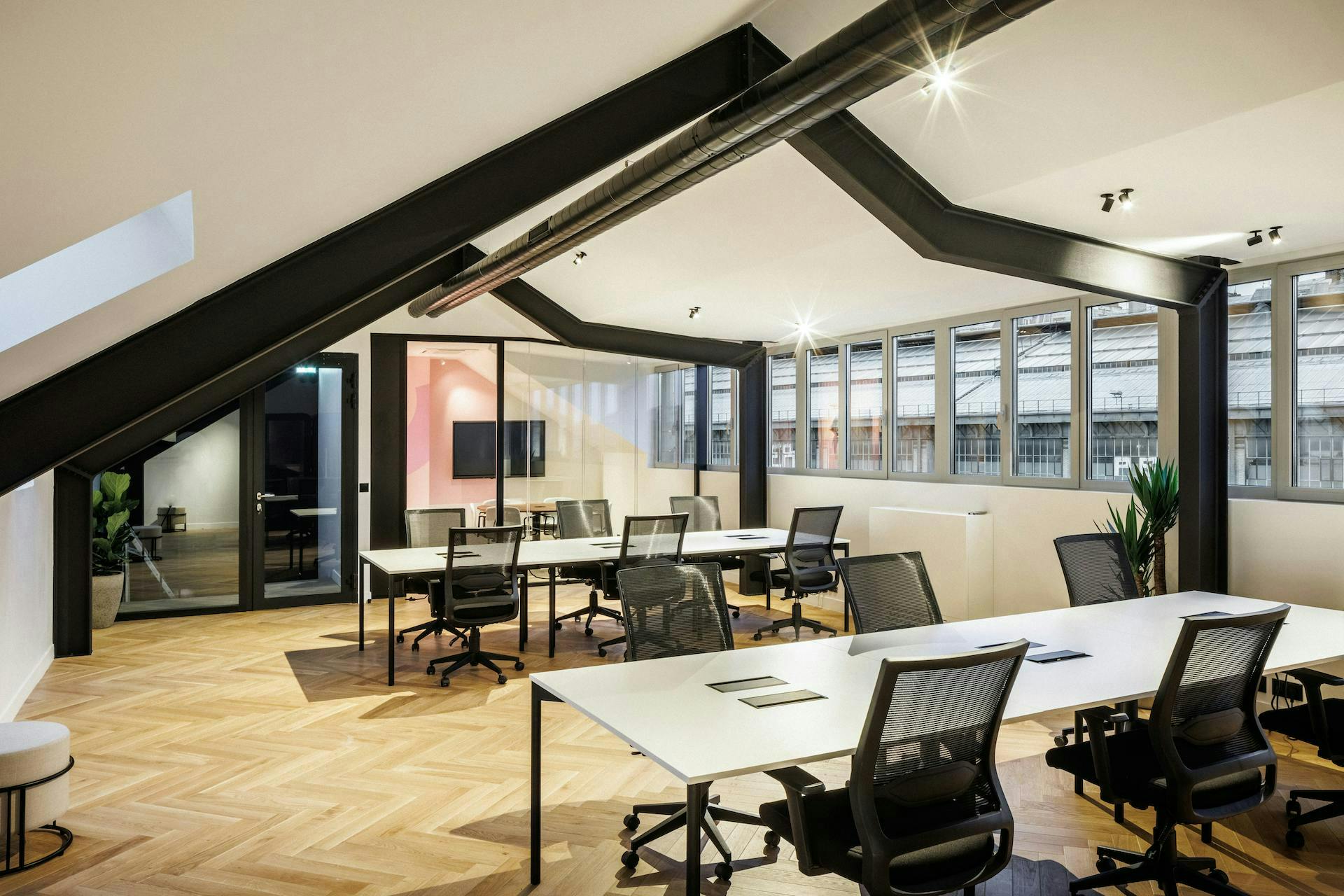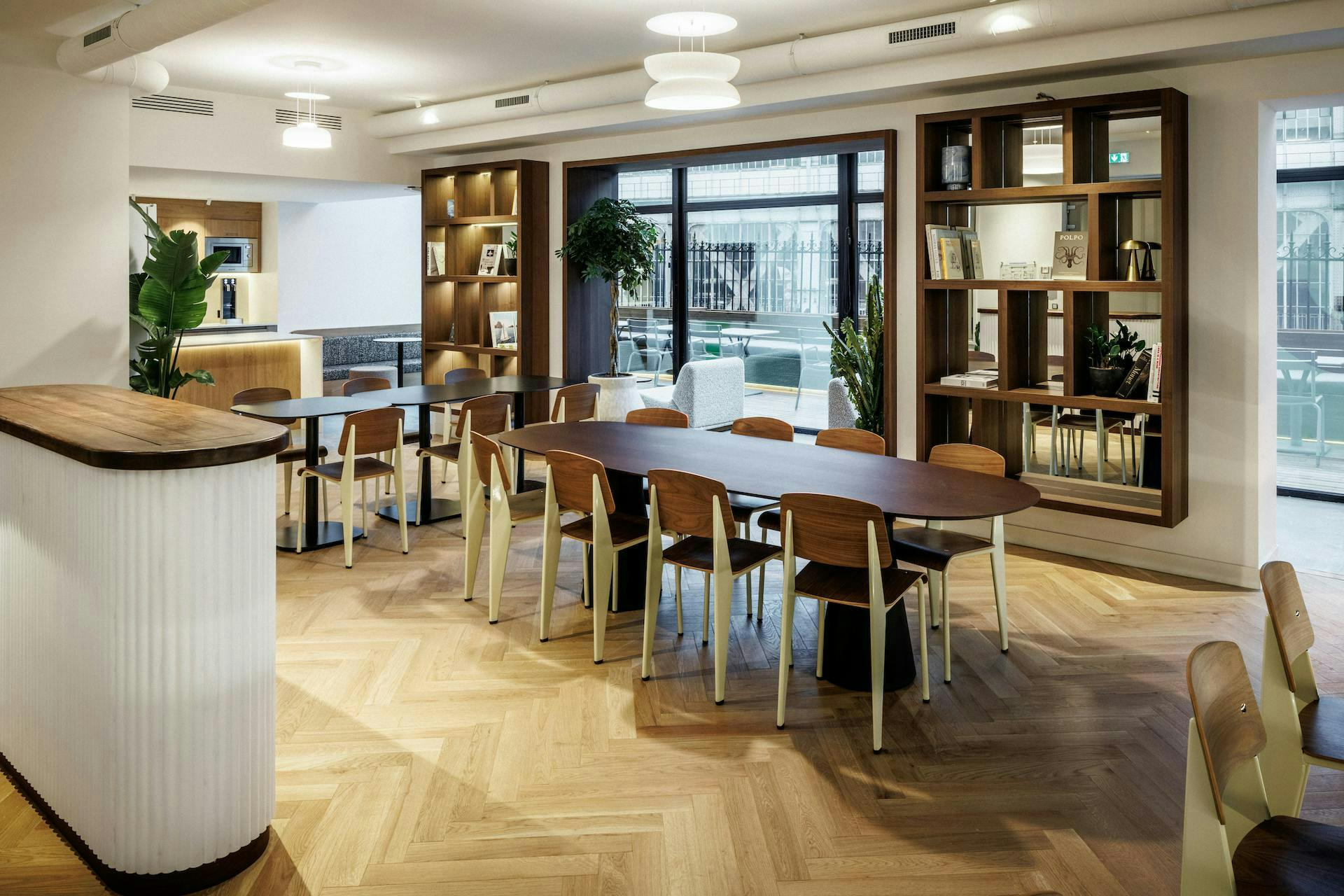

All about the flex office: definition, advantages and functioning
What is the flex office?
The flex office, also known as the flex desk, is a new way of organising the workplace. It has become a benchmark for companies and their employees. The flex office is based on trust rather than control and on the quality of working life.
The flex office corresponds to the absence of a permanent workstation; it therefore constitutes a total change of organisation on the part of companies. The objective is not necessarily to reduce the surface area but to optimise the layout in order to adapt to new working methods with more collaborative spaces.
Teleworking is an integral part of the flex office. The implementation of desk sharing radically changes the quality of life at work and transforms the traditional office into a collaborative space and the employee into a nomadic worker.
The flex office concept has a significant impact on the open space as it challenges the traditional conception of this working environment. Open space is an office layout that involves large open rooms where employees work side by side, without walls or partitions to separate them. The flex office therefore redefines a number of concepts such as the open space.
Not to be confused with the flexible office, also known as the operated office. The flexible office is a workspace with a service contract. This model, which is a cross between the traditional office and coworking, combines flexibility and service provision.
How does the flex office typically work?
The flex office works in a simple way: the company provides its employees with dedicated storage spaces in which they are free to store their computers and other personal belongings. Once the employee arrives at the workplace, he or she picks up his or her computer and chooses the workspace that corresponds to his or her day's tasks. This new way of working requires the provision of a number of equipped spaces (furniture, IT equipment, etc.) so that employees can collaborate as well as possible within this new working environment.
The objective of the flex office is simple, the employee moves to the workspace best suited to his or her tasks, teleworking may also be the best option for him or her.
Does the flex office facilitate management and work organisation?
Flex office and hybrid working influence the management in place, control is replaced by trust in the employees. In terms of practicality, it is recommended that a number of operational tools be put in place to share information on the progress of various projects. Internal communication becomes essential and must be reinforced with the help of digital technology.
On the other hand, it is necessary to be vigilant and define internal rules in order to limit the phenomenon of hyperconnection.

What are the advantages of the flex office?
The flex office boosts productivity and creativity
These new working environments boost the productivity and creativity of employees, as they no longer have that feeling of routine in their day and this translates into greater openness, sharing of ideas, etc. The flex office brings more agility and autonomy to employees in their work. This model has clearly been democratised over time, particularly since the health crisis.
Flex office, a real social lever
Shared offices also help to create a social bond within the company, as the different departments are able to exchange information with each other more easily, thanks to the fact that workstations are not allocated. This can lead to a better understanding of each department's objectives and greater collaboration to achieve these objectives. In addition, flexible working can also facilitate communication by giving employees the opportunity to stay connected at all times, even outside traditional working hours. Ultimately, the flex office can help strengthen relationships within the company and improve communication and collaboration between employees and departments.
Cost savings for companies
Flex office allows companies to reduce the number of workstations and office space, resulting in a significant reduction in costs and property rent. Companies are attracted to the flex office model and for good reason, a workstation represents an average cost of €13,000 per year.
What are the disadvantages and risks of the flex office?
This new work organisation also has disadvantages for both employees and companies. The absence of a dedicated desk makes offices less personal, and employees no longer decorate their space as they would in a traditional office.
Good organisation is essential with the flex office, so make sure you book your meeting rooms and find the ideal spot in advance... Desk sharing gives employees a lot of freedom, but they must remain rigorous. Clutter can quickly appear in open spaces, and employees must remain vigilant and not scatter their belongings in the various work environments.
Companies tend to underestimate the occupancy rate, which can lead to overcrowding. The transition to flex office requires preparation and reflection on the part of companies.

Contact Us
We find your Perfect fit!
